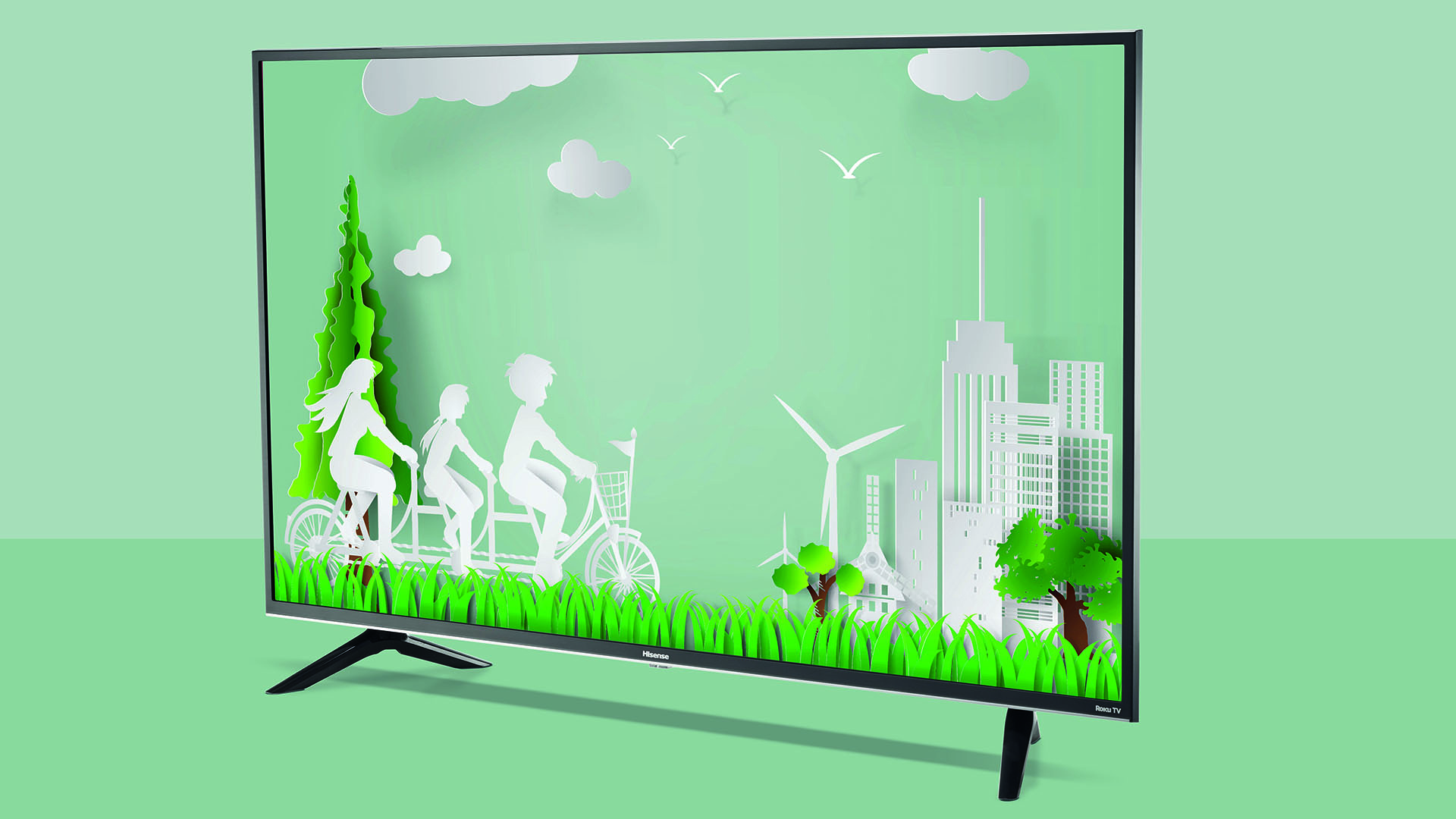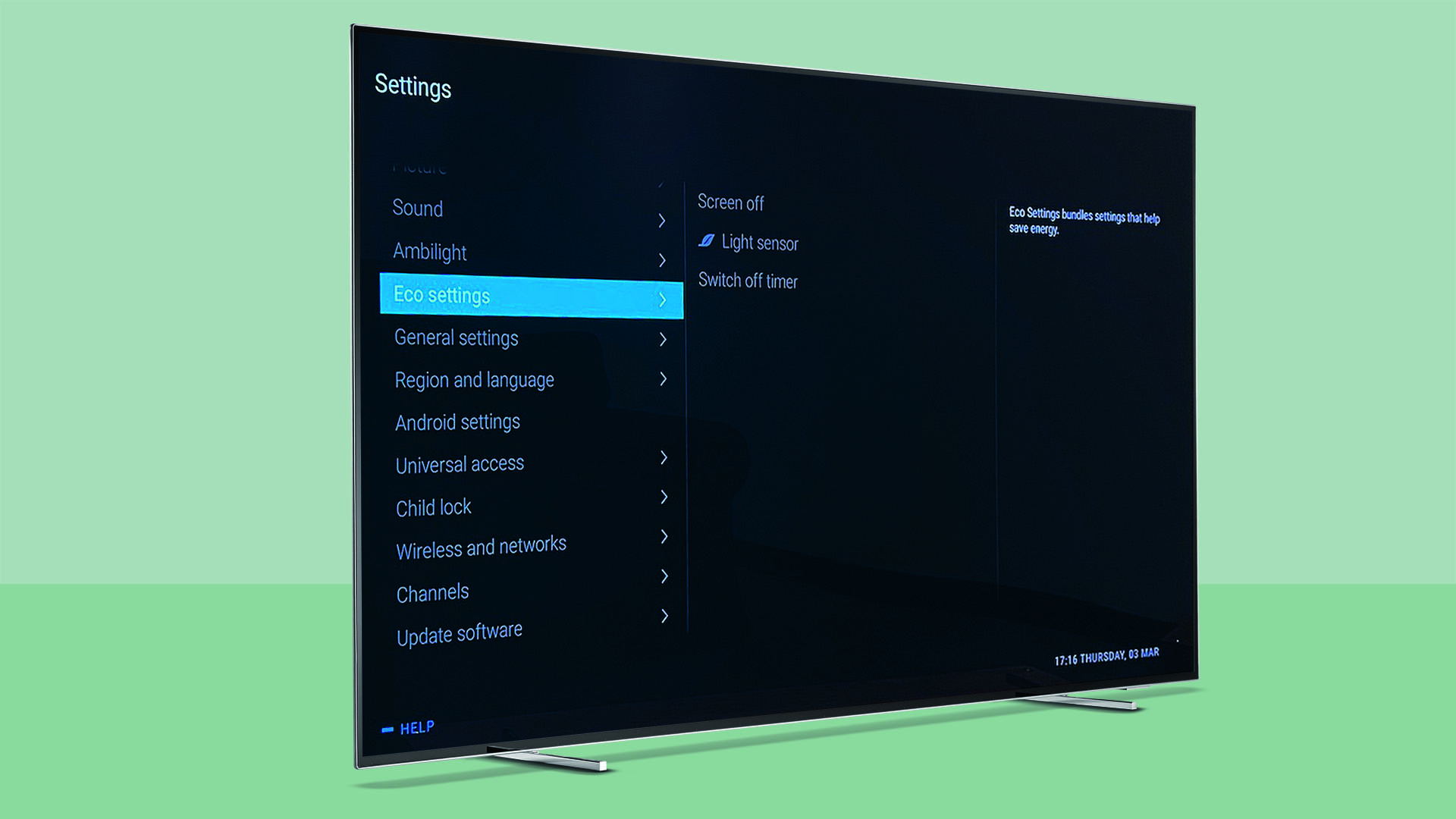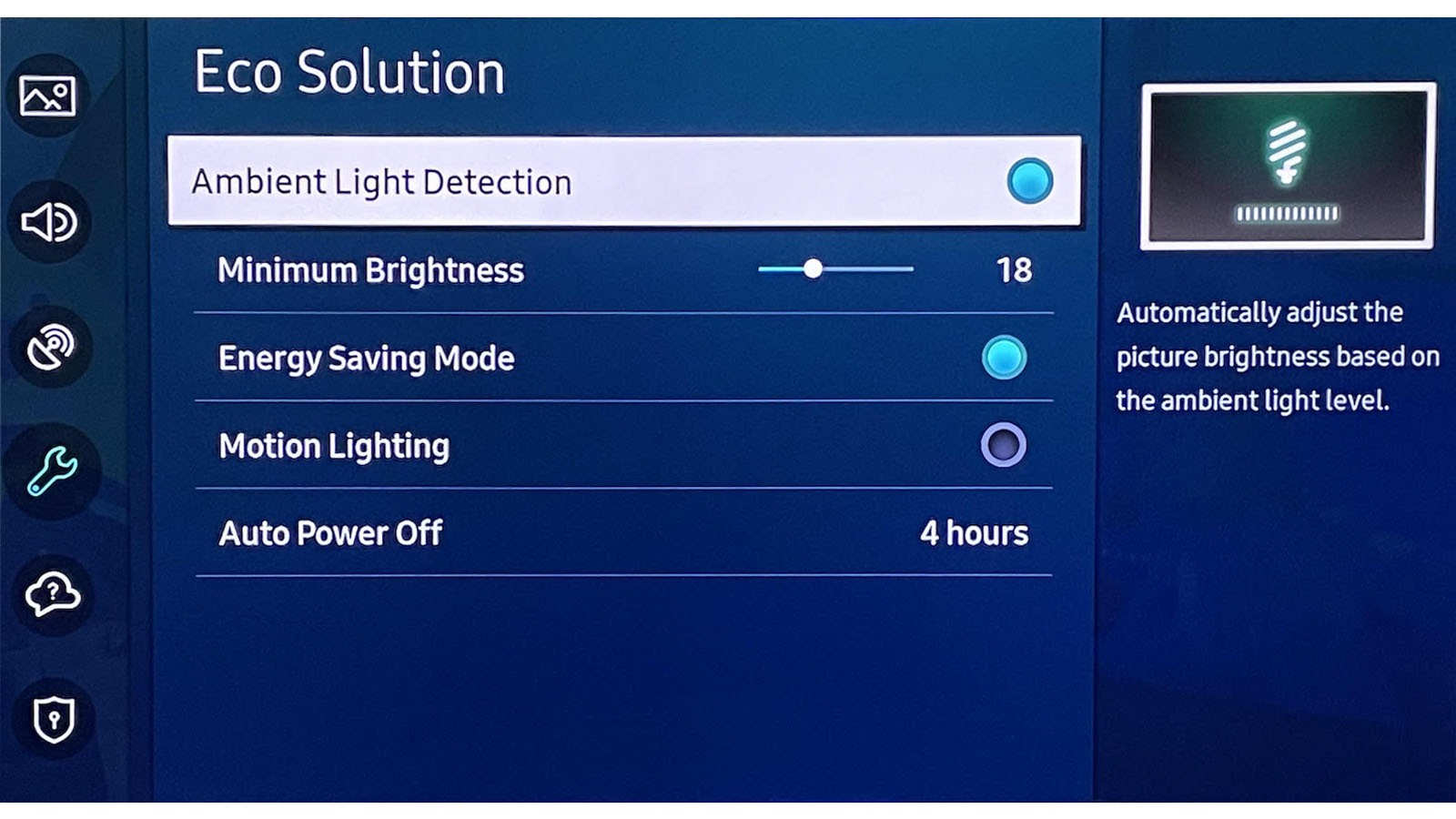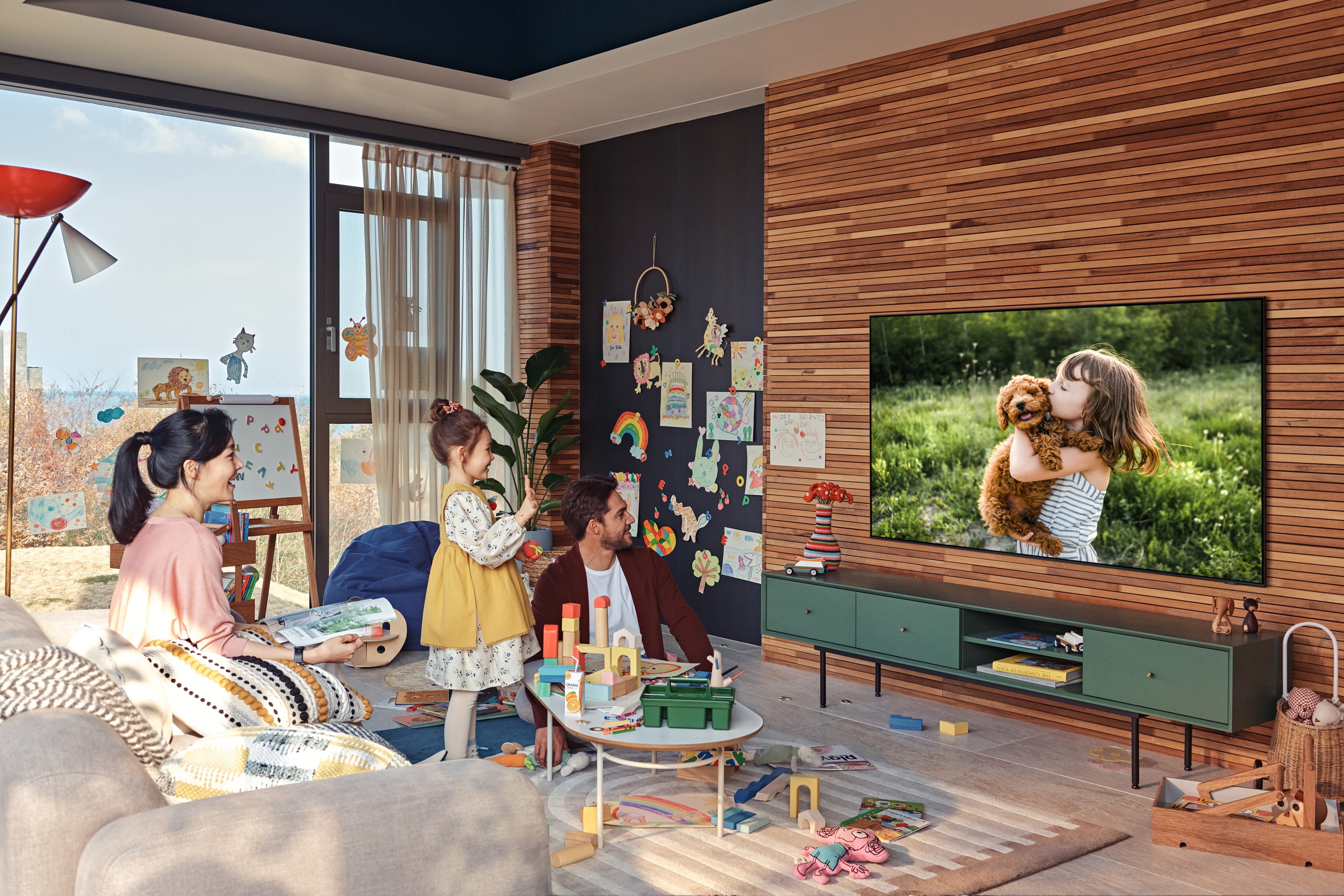Should I use my TV in Eco mode? The pros and cons of energy-saving settings
What does the Eco mode do and why should you be wary of it?

Pretty much every mid-range or high-end TV you buy these days has an Eco mode. It might not always carry that exact name; sometimes, for instance, it’s part of an Ambient Light Detection system or similar. Eco modes can be quite tricky to track down in your TV’s menus, too; Samsung, for instance, hides its Eco features pretty much right at the bottom of its TVs’ General Submenu, under the name Eco Solution. Look hard enough, though, and an Eco mode will almost certainly be there somewhere.
In fact, many of the TVs that carry an Eco mode have it active by default in their out-of-the-box picture settings.
The Eco mode name cunningly covers two reasons for the feature’s existence. First, Eco modes are designed to be eco-friendly, using less power so that they consume less of our planet’s dwindling resources and reduce attendant emissions. Also, though, Eco Modes deliver an instant eco-nomical benefit by reducing your electricity bill – something that’s about to matter more than ever thanks to the enormous increases in electricity prices and general rises in the cost of living heading our way right now.
Eco-friendly, but there's a downside

To give you some idea of how much energy your TV might be using in its Standard HDR mode, the LG 55C1 OLED TV uses around 171kWh/1000h of power (based on official independent UK Energy figures), while Samsung’s ultra bright mini LED-lit 65QN95A uses 242kWh/1000h.
The joint green and financial motives for using Eco modes both sound pretty persuasive, it’s fair to say. TV brands have an additional motivation to keep offering them, too, in the shape of increasingly severe legislative constraints on how much power TVs are allowed to use – at least in their out-of-the box settings.
Before you all rush off to make sure that your TV is running in its Eco mode, though, there’s one pretty significant downside to consider: Eco modes can really mess with your picture quality.
We first became aware of just how much of an impact Eco matters can have on picture quality way back in the days of plasma technology, where we heard from multiple brands that they’d had to substantially rein-in the potential brightness of their plasma panels in order to avoid falling foul of TV energy regulations. In fact, this problem – especially when high dynamic range (HDR) technology started to appear on the horizon – certainly didn’t help plasma’s fight against extinction.
Brightness remains the area where Eco settings typically have their biggest negative impact on picture quality. This is hardly surprising; the most direct way to reduce TV power consumption is simply to limit the amount of brightness a screen pumps out. Now that HDR is a well-established part of an AV fan’s regular viewing life, though, reducing brightness is inevitably going to heavily affect both the impact and the accuracy of a screen’s HDR presentation.
Reducing brightness also affects a screen’s perceived contrast, the amount of colour volume it can show, and the amount of detail you can see in dark areas. Don’t forget, either, that HDR is designed to make images look more lifelike, but it’s hard to do justice to footage of a sunny day when your TV is only using a fraction of its brightness potential.
With all this in mind, we have to say that pretty much our first job when reviewing a new television is to turn off its Eco features, so we can be sure we’re getting a proper idea of what the TV is actually capable of.
Heavy-handed approach

One of the most common Eco mode implementations is to use light sensors built into a TV to monitor ambient brightness levels, and adjust the picture accordingly. The assumption being that you can manage in darkened rooms with less brightness and so use less power. However, if done as unintelligently as it has been by most TVs for years now, this can sometimes just feel like a TV is turning HDR into SDR during dark room viewing, so extreme is the amount of light that’s being taken out of the picture.
This typically heavy handed approach to Eco modes appears despite the fact that consumer research continues to show that picture quality remains one of the most key features consumers look for when buying a TV, while power consumption remains one of the least important. (Though this could change, of course, if electricity prices continue to soar.)
The waters of light sensor-based picture adjustments have been muddied (with good intentions) over the past couple of years by the arrival of sophisticated new Dolby Vision IQ and HDR10+ Adaptive systems. These draw on the information provided by light sensors to intelligently adjust the way HDR is presented, so that HDR images enjoy the same sort of impact they were mastered to deliver no matter how much ambient brightness a screen is having to compete with.
In other words, these systems are about creating a consistent viewing experience, avoiding the situation where viewers sometimes feel as if HDR footage looks too dark in a bright room by adjusting multiple image elements (not merely enhancing brightness). These modes are very much not focused on using light sensor information to reduce power consumption.
So, should you use Eco mode?

While we’ve armed you with the pros, cons and complexities surrounding TV Eco modes, we realise we haven’t outright answered the question of whether you should use them or not. The simple truth, though, is that to a great extent – a greater extent now, in fact, than ever before – the answer must boil down to personal preferences and priorities. Whether what matters to you most is green issues, personal finance or picture quality.
Since pretty much our entire raison d’etre at What Hi-Fi? is to help you find products that give you the ultimate in performance, we still lean pretty strongly towards turning off Eco features to get the last word in picture quality. At least when you’ve settled down for a proper movie/TV series binge night. And our guess is that this stance will likely be shared by most AV fans who’ve spent big on a premium TV (which increasingly these days means a TV that’s high in brightness).
That said, with the various problems facing the world right now, perhaps now is the time to start including TV Eco modes in our daily lives rather than just switching them off and forgetting about them. For instance, while you may want to get the maximum impact from your TV with 4K Blu-rays or an episode of Reacher on Amazon Prime Video, you might well find you’re more than happy to switch to Eco mode when you’re watching more casual content. Especially as much of that more casual content may well appear in SDR rather than HDR.
Mixing your use of Eco mode this way will, of course, require you to keep remembering to switch the mode on and off for different viewing occasions. Once you’ve done it a few times, though, it should become almost as natural as just hitting the source select button.
Provided it’s possible within power usage regulations, it would be helpful if TVs got a bit cleverer about their Eco mode settings. For instance, perhaps they could take advantage of their increasing use of AI technologies to offer an option where the TV can automatically discern the difference between ‘casual’ and ‘serious AV’ content, switching Eco modes on and off accordingly.
As things stand today, though, if you want to enjoy the best your TV has to offer while also saving a little cash and doing your bit to save the planet, you’re just going to have to add one more little step to your already complicated AV life.
MORE:
How to set up your TV and get the best picture
Our pick of the best TVs
And the best TV deals
Get the What Hi-Fi? Newsletter
The latest hi-fi, home cinema and tech news, reviews, buying advice and deals, direct to your inbox.
John Archer has written about TVs, projectors and other AV gear for, terrifyingly, nearly 30 years. Having started out with a brief but fun stint at Amiga Action magazine and then another brief, rather less fun stint working for Hansard in the Houses Of Parliament, he finally got into writing about AV kit properly at What Video and Home Cinema Choice magazines, eventually becoming Deputy Editor at the latter, before going freelance. As a freelancer John has covered AV technology for just about every tech magazine and website going, including Forbes, T3, TechRadar and Trusted Reviews. When not testing AV gear, John can usually be found gaming far more than is healthy for a middle-aged man, or at the gym trying and failing to make up for the amount of time he spends staring at screens.
-
lovlid So,,,,after giving us an example of the energy used by two, presumably popular, TVs, in power modes you, presumably, review them in, you then fail to give us any information as to how much power they use in eco mode. Rendering the article a little bit less useful than it could be.Reply
Back to journo school with you. -
psurquhart Valid point lovlid- it would be interesting to know how much money the saving would equate to in real terms / pounds based on average yearly viewing figures. I’m guessing it really wouldn’t be that substantial but I do get the whole choice perspective. Personally if I’m paying top dollar for premium tv then I want a top dollar presentation unfortunately however much I get the ecological debate.Reply
